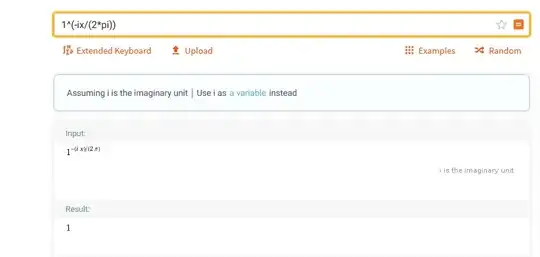I was wondering if this is a correct way to apply "exponent rules",
$$e^{x}=\left(e^{2\pi i}\right)^{x/2\pi i}=1^{-ix/2\pi}$$
I thought it was safe, just found it a bit weird, but I wanted to check if I could plot this in Wolfram Alpha and get the usual graph for $e^{x}$ (WA allows to plot both the real and imaginary parts of a real, complex valued function).
To my surprise the result appears to be 1.
So, did I make a mistake in applying these rules? or is Wolfram Alpha making a mistake?
EDIT: Here is an image (in case I'm right and it gets modified in the future).
